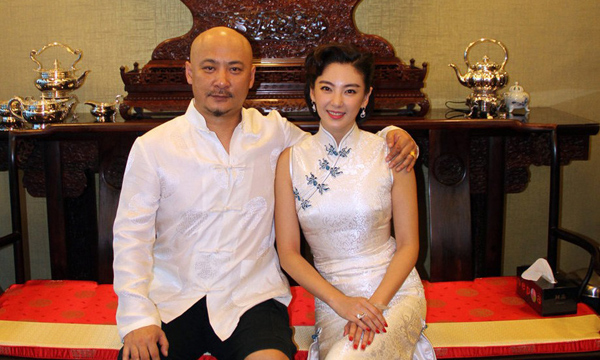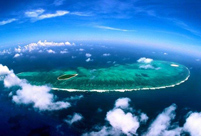 Opps! What a coincidence!
Opps! What a coincidence!
 Breathtaking scenery in Redstone Park in SW China
Breathtaking scenery in Redstone Park in SW China
 Vintage cars show kicks off in London
Vintage cars show kicks off in London
 Gorgeous scenery in NE China
Gorgeous scenery in NE China
 Picturesque Barkol grassland in Xinjiang
Picturesque Barkol grassland in Xinjiang
 Small Wild Goose Pagoda - A World Cultural Heritage Site along the Silk Road
Small Wild Goose Pagoda - A World Cultural Heritage Site along the Silk Road
 Maritime Silk Road Luxuries of the Han Dynasty
Maritime Silk Road Luxuries of the Han Dynasty
 Ciao! Chinese beauties!
Ciao! Chinese beauties!
 An eye feast: BFA freshmen registration
An eye feast: BFA freshmen registration
 Top 10 most lavish weddings
Top 10 most lavish weddings
Chinese Premier Li Keqiang will soon start his trip to Europe, making 2014 the year of the European.
During this trip Premier Li has three main tasks: first, to participate in the 3rd Round of Sino-German Government Consultations and pay an official visit to Germany; second, to attend the 10th Asia-Europe Meeting held in Milan; and third, to make an official visit to Italy and deliver a speech at United Nations Food and Agriculture Organization (UNFAO) in Rome.
The targets of these three tasks can be summarized into one sentence - to promote connectivity between China and Europe through 'One Belt and One Road' (OBOR), to investigate intercontinental influences of Sino-European cooperation, and to act as a role of radiation to African countries.
The 16th China-EU Summit will position Sino-European relations as 'two great powers' in maintaining world peace, 'two major markets' in promoting common development and 'two important civilizations' in advancing human progress. From this point of view, there are three major intercontinental influences of Sino-European cooperation.
Above all, OBOR can promote a more inclusive globalization. In recent years, the United States has continually excluded China and tried to strengthen its strategic control of Japan and Europe through establishing organizations at a much higher level of globalization, such as the Trans-Pacific Partnership (TPP) and the Transatlantic Trade and Investment Partnership (TTIP). In response, China and the European Union have put forward the plan for the OBOR, and propounded the new European Silk Road plan aiming to build a free trade area extending in scope from Lisbon to Vladivostok, and designed to make it easier for partner countries to make connections between Moscow and Brussels. The Silk Road on land and sea connects China, Europe and Africa, and also works as a link connecting the Pacific, the Indian Ocean, and the Mediterranean. It can play a serious role in realizing a more inclusive globalization.
Secondly, Sino-European cooperation can propel Eurasian integration through enhancing connectivity. The European Commission is rolling out the Connecting Europe Facility (CEF) project, which is designed to complete a powerful European transport network across 28 member states by 2030. With a budget of €26 billion up to 2020, 9 traffic corridors will be built across the continent, cross boundary traffic will be optimized, and a transport network will be set up. Meeting with the idea of China's OBOR, the EU can create a comprehensive connective transport network with China by building railroads, highways, oil-gas pipelines, etc. across the two continents.
Last but not least, Sino-European cooperation can help to seek coordinated intercontinental development through conducting third party cooperation. As China goes global, its inexperience restricts its development. European countries, on the other hand, are nations who formerly operated colonial systems all around the world, and have extended significant influence on the development of Asia, Africa, and Latin America from the 17th century to the present. So it seems an obvious choice for both sides to support the potential of Sino-European cooperation with the help of Europe's long-term impact on those countries.
To implement UN Millennium Development Goals and realize coordinated development, China and Europe should actively cooperate with third party countries, efficiently avoid zero-sum thinking, and find a sensible way to end the dispute between colonialism and neocolonialism.
This will be Premier Li's second trip to Europe this year, making a Sino-European strategic partnership increasingly comprehensive and adding further globalization aspects to the strategic implications. Posthac occasio calva – Wisdom overcomes strength. The EU has no time to lose.
The article is edited and translated from《中欧合作的三重洲际效应(望海楼)》 by Chen Jingtong , source: People's Daily Overseas Edition, author: Wang Yiwei (Scholar)
 Top 10 Chinese goddesses selected by S. Korean media
Top 10 Chinese goddesses selected by S. Korean media Netizens fall in love with champion swimmer Ning Zetao
Netizens fall in love with champion swimmer Ning Zetao Vibrant 21-year-old and her own Cheongsam brand
Vibrant 21-year-old and her own Cheongsam brand Fashion style: Faye Wong vs Cecilia Cheung
Fashion style: Faye Wong vs Cecilia Cheung Jungle law: leopard preys on impala
Jungle law: leopard preys on impala Female bus driver drives Land Rover for commuting
Female bus driver drives Land Rover for commuting Leading director Wang Quan'an detained for 'buying sex'
Leading director Wang Quan'an detained for 'buying sex' Amazing aerial photos of China's Xisha Islands
Amazing aerial photos of China's Xisha Islands Top 10 world's highest-paid models 2014
Top 10 world's highest-paid models 2014 Season of the fall begins
Season of the fall begins Top 10 fifth generation jet fighters in the world
Top 10 fifth generation jet fighters in the world Lingerie show at 2014 Miss China
Lingerie show at 2014 Miss China Songstress Li Xianglan dies at 94
Songstress Li Xianglan dies at 94 Police recruiting posters
Police recruiting posters Anshun Daxi- Living fossil of Chinese drama
Anshun Daxi- Living fossil of Chinese dramaDay|Week|Month